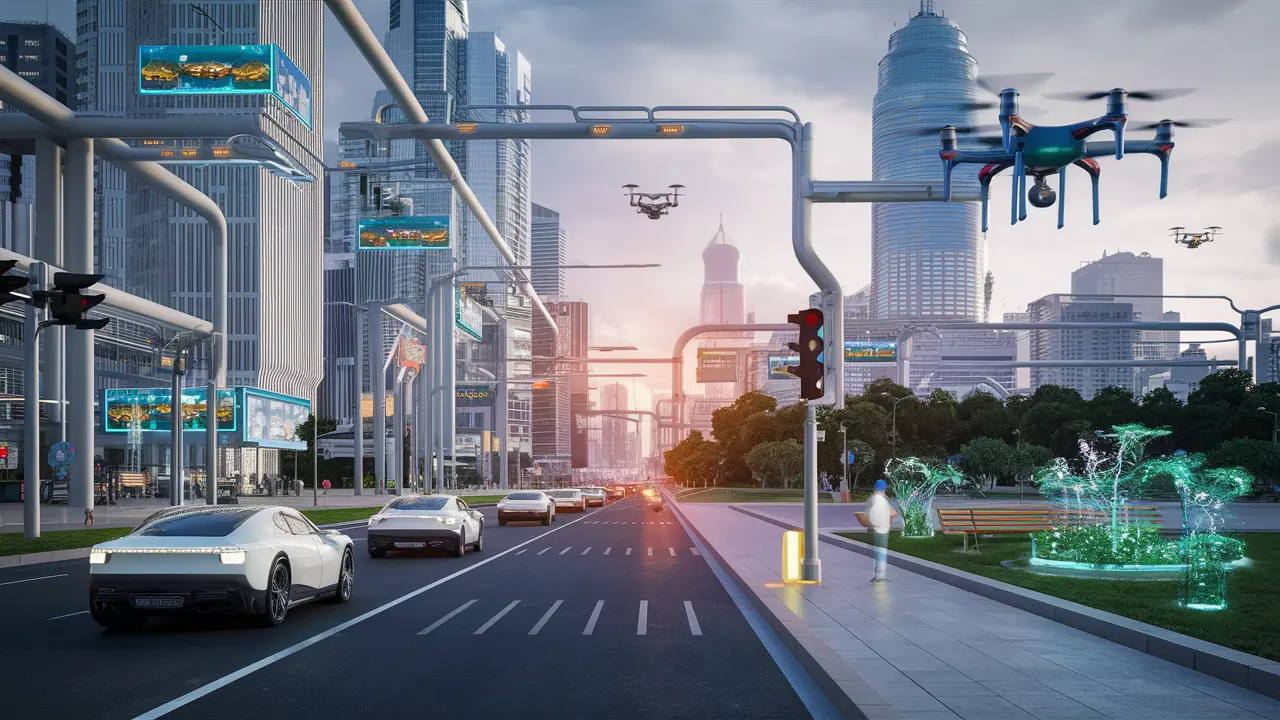Integrating technology into urban design to create smart cities offers numerous benefits in enhancing efficiency, sustainability, and quality of life for residents. Here’s how technology can be effectively integrated into urban design to foster smart cities:
- Smart Infrastructure and Utilities:
- IoT Sensors: Deploying Internet of Things (IoT) sensors across the city for real-time monitoring of infrastructure such as bridges, roads, and utilities (water, electricity, gas). This allows for proactive maintenance and efficient resource management.
- Smart Grids: Implementing smart grids that optimize energy distribution, reduce power wastage, and integrate renewable energy sources. Smart meters enable residents to monitor and manage their energy consumption.
- Water Management: Using IoT sensors and data analytics for smart water management, including leak detection, water quality monitoring, and efficient irrigation systems in public spaces and parks.
- Mobility and Transportation:
- Intelligent Transportation Systems (ITS): Integrating ITS technologies like traffic cameras, sensors, and adaptive traffic signals to manage traffic flow, reduce congestion, and improve safety.
- Public Transportation: Implementing smart public transit systems with real-time information on schedules, routes, and availability. This includes apps for trip planning, fare payment, and integrating various modes of transport (bus, metro, bike-sharing).
- Autonomous Vehicles (AVs): Testing and integrating AVs into urban transport systems to enhance mobility, reduce accidents, and optimize road usage.
- Digital Connectivity and Accessibility:
- 5G and Broadband Infrastructure: Building robust digital infrastructure with high-speed internet connectivity (5G) to support smart city applications, IoT devices, and digital services.
- Digital Inclusion: Ensuring equitable access to digital services and technologies for all residents, bridging the digital divide through initiatives like public Wi-Fi, digital literacy programs, and affordable internet access.
- Data-driven Decision Making:
- Big Data and Analytics: Collecting and analyzing data from IoT sensors, mobile apps, and other sources to gain insights into urban trends, citizen behavior, and environmental conditions. This data informs evidence-based decision-making for urban planning and policy development.
- Predictive Analytics: Using predictive modeling to anticipate future urban challenges such as traffic patterns, air quality, and energy demand. This enables proactive measures to address potential issues before they escalate.
- Smart Buildings and Infrastructure:
- Energy-efficient Buildings: Incorporating smart technologies in buildings for energy management, including automated lighting, HVAC systems, and smart meters. This reduces energy consumption and operational costs while enhancing comfort for occupants.
- Green Infrastructure: Integrating green roofs, vertical gardens, and permeable surfaces to improve air quality, manage stormwater runoff, and reduce urban heat island effects.
- Citizen Engagement and Services:
- Smart Governance: Enhancing civic engagement through digital platforms for feedback, participatory budgeting, and interactive community forums. This fosters transparency, accountability, and responsiveness in local governance.
- Smart Services: Providing digital services such as e-government, online permitting, and mobile apps for reporting issues (e.g., potholes, waste management) and accessing municipal services.
- Resilience and Sustainability:
- Climate Resilience: Implementing technologies and strategies to mitigate climate change impacts, such as flood sensors, green infrastructure, and disaster response systems.
- Circular Economy: Promoting resource efficiency and waste reduction through initiatives like smart waste management, recycling programs, and circular economy practices.
Integrating technology into urban design for smart cities requires collaboration among government agencies, private sectors, academia, and residents. By leveraging data-driven insights and innovative technologies, smart cities can enhance efficiency, sustainability, and the overall quality of life for their inhabitants.irtual needs must anticipate those questions of people that they do not think, and suddenly opened in the already created objects. I want to create beautiful things, even if it’s not necessary for anyone, as a fight against ugly things. This is my intention.

